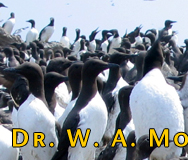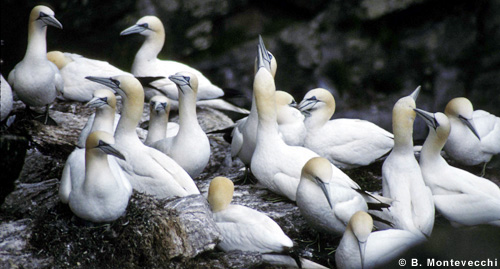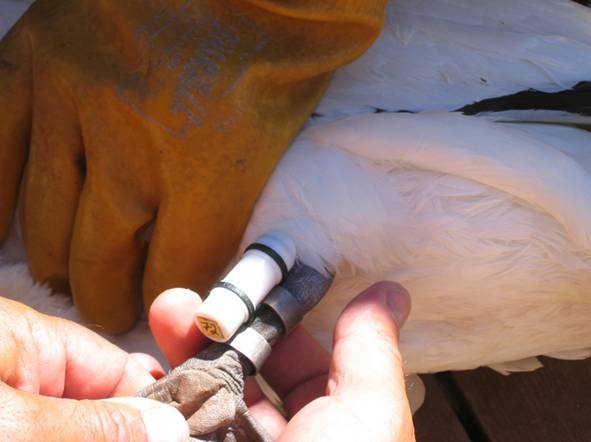

Foraging Ecology of Seabirds: Intersecting Prey and Oceanographic Conditions

Seabirds are studied to understand biological and oceanographic processes. Multi-species complexes of seabirds are studied as consumers and indicators in marine ecosystems. Multi-disciplinary studies involving 1) miniaturized positional and physical measurement recorders attached to free-ranging seabirds to assess their foraging behaviour, 2) isotopic analyses of energy-expenditures and trophic level, 3) vessel transects of seabirds, fish, crustaceans and oceanographic conditions within avian foraging ranges, 4) colony-based measurements of parental feeding and chick conditions and 5) the synoptic integration of 1-4.
![]()
GPS tracks of free-ranging gannets foraging from Funk Island. (Garthe et al. submitted)


A bird with an earth and Oceans Geo-LT logger attached (top), and a close up (bottom), used in the study of gannet migration.
Click on the image above to watch a video by MARE TV of Germany of field crew attaching a geolocation logger to a gannet at Cape St. Mary's Ecological Reserve in Newfoundland (approx. 40 MB - this may take a short while to download).
Interrogating Seabirds: Simple Signals are Highly Important (Pacific Seabird Group Meeting - February 2006)
